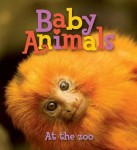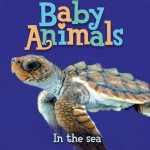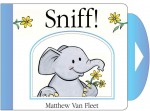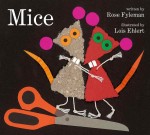Best Books To Give Younger Kids You Don’t Know Very Well
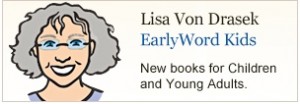 Welcome to part one of my sixth annual answer to the burning question: “How do I choose a book as a gift for a kid I don’t know very well?” [Links to the previous five years answers are available here].
Welcome to part one of my sixth annual answer to the burning question: “How do I choose a book as a gift for a kid I don’t know very well?” [Links to the previous five years answers are available here].
Books may seem under threat these days, but we know that readers still have a competitive edge over non-readers and that children who hear a wide range of vocabulary at home do better in school than kids who don’t. Who wouldn’t want to give this priceless gift?
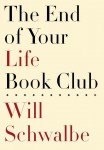 A great example of the benefits of a lifetime of book sharing is Will Schwalbe’s The End of Your Life Book Club (RH/Knopf; BOT Audio; RH Audio), a book I will be giving to all the memoir junkies on my list this year. Schwalbe, who also co-wrote my favorite gift for new grads and recent hires, SEND: Why People Email So Badly and How to Do It Better, creates a portrait of his mother, Mary Anne Schwalbe within the framework of the books that they loved and shared while she endured treatment for pancreatic cancer. For bibliophiles and fans of Ex Libris by Ann Fadiman, the book discussions are like a scrapbook of “Oh, yes, I loved that book, too” and “I never did get around to that one, it’s around the house somewhere” and “I need to get that one right away.” Through this memoir about family and spirituality we grow to love, admire and respect Mary Anne Schwalbe not only as a person, but also as a parent who raised an empathetic, compassionate, and well-read son.
A great example of the benefits of a lifetime of book sharing is Will Schwalbe’s The End of Your Life Book Club (RH/Knopf; BOT Audio; RH Audio), a book I will be giving to all the memoir junkies on my list this year. Schwalbe, who also co-wrote my favorite gift for new grads and recent hires, SEND: Why People Email So Badly and How to Do It Better, creates a portrait of his mother, Mary Anne Schwalbe within the framework of the books that they loved and shared while she endured treatment for pancreatic cancer. For bibliophiles and fans of Ex Libris by Ann Fadiman, the book discussions are like a scrapbook of “Oh, yes, I loved that book, too” and “I never did get around to that one, it’s around the house somewhere” and “I need to get that one right away.” Through this memoir about family and spirituality we grow to love, admire and respect Mary Anne Schwalbe not only as a person, but also as a parent who raised an empathetic, compassionate, and well-read son.
Your gift may spark a similar lifetime of reading. So, how do we select a book for a child we don’t know very well or see very often?
For young children, we want picture books with writing that sings, outstanding art that expands on the words, and stories or information that are developmentally appropriate. Below are this year’s picks from your librarian, for the family with the new baby, the grandchildren who live across the country, the godchildren who have arrived for the weekend and to amaze your nieces and nephews with your superior intuitive abilities, chosen from the thousands of children’s books published this year — sorted by age group, and with some notes to help you spot just the right book for that young reader. Since kids are likely to already know the latest Rick Riordan, James Patterson or Ivy and Bean book, the ones I have selected are mostly sleepers.
PICTURE BOOKS
For the family with the new or newish baby
Baby Animals: In the Sea and Baby Animals : At the Zoo (Board Books, Macmillan/Kingfisher), ages 6 months and up
This series of board books are are the perfect introduction to language for the very young. Sharp photographs paired with a just-right text are a delightful first read-aloud.
Sniff! Matthew Van Fleet (S&S/Paula Wiseman), ages 6 months and up
Matthew Van Fleet has invented a way to delight toddlers with a sturdy board book containing interactive parts, building on the success of his earlier Tails (HMH, 2003), Sniff! is an exploration of noses and smell. We can touch the bear’s squishy tactile shiny embedded nose, feel the twitchy whiskers attached to the mouse’s nose and move the elephant’s trunk up and down.
Two- and Three-Year-Olds
Two of the best read-alouds for this group have bold graphic illustrations:
Mice by Rose Fyleman illustrated by Lois Ehlert, (S&S/ Beach Lane Books), ages 3 and up
Lois Ehlert explores Mice the classic poem by Rose Fyleman, (which begins, “I think mice are rather nice”) often found in children’s poetry collections. Ehlert (Chicka Chicka Boom Boom, Growing Vegetable Soup and others) has created charming rodents from geometric shapes with cut paper collage.
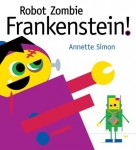 Robot Zombie Frankenstein! by Annette Simon, (Candlewick), ages 3 and up
Robot Zombie Frankenstein! by Annette Simon, (Candlewick), ages 3 and up
The title most likely to reap the shout, “read it again!” is Robot Zombie Frankenstein! Here, Annette Simon crosses the outrageousness of Shark Vs Train with the sly humor of Mo Willem’s Pigeon series. Shapes play a significant role in the digitally rendered, sharp-edged, boldly colored graphic illustrations. Simon layers the shapes to create mashed up transformations from fairly benign robot antagonist to frighteningly fun disguises.
Concepts
When preparing preschoolers for school, there are certain concepts parents need to teach their children. Most early childhood concepts are obvious; colors, numbers, and recognizing the alphabet.
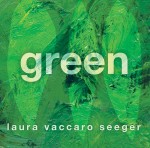 Green by Laura Vaccaro Seeger, (Macmillan/Roaring Brook) ages 3 and up
Green by Laura Vaccaro Seeger, (Macmillan/Roaring Brook) ages 3 and up
Laura Vaccarro Seeger demonstrates that she is one of the most inventive picture book artists of our time with Green, exploring the varieties of shades with acrylic paint, from lush brushstrokes of forest green to delicate dots of the glowing tails of fireflies. The simple rhyming text lulls the reader as the pages with their cut-outs for new colors foreshadow the next surprising twist:
Ages 4 and up
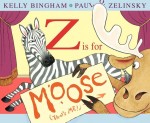 Z is for Moose by Kelley Bingham illustrated by Paul O. Zelinsky (HarperCollins/Greenwillow), ages 4 and up
Z is for Moose by Kelley Bingham illustrated by Paul O. Zelinsky (HarperCollins/Greenwillow), ages 4 and up
Just when a reviewer may sigh, “Oh no, not ANOTHER alphabet book” arrives Kelly Bingham’s Z is for Moose illustrated by Caldecott winner Paul O. Zelinsky. The premise is that all of the objects and animals are lining up to present an alphabet play. Zebra is directing the action that begins quite orderly until Moose busts into the action impatient to have his turn. Zelinsky’s renderings of Moose’s wide-ranging emotions perfectly capture a young child’s big feelings when anxious and angry, exploding off the page in an uncontrollable tantrum.
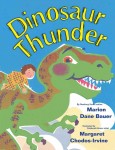 Dinosaur Thunder by Marian Dane Bauer, illustrated by Margaret Chodos-Irvine (Scholastic), ages 4 and up
Dinosaur Thunder by Marian Dane Bauer, illustrated by Margaret Chodos-Irvine (Scholastic), ages 4 and up
Learning to handle big feelings like fear are essential for a child’s development. Marian Dane Bauer, hits one out of the park with Dinosaur Thunder, illustrated by Margaret Chodos-Irvine. Brannon is afraid of thunder and runs for safety as the sound booms from above. The adults try to help with familiar tropes like “It’s just angels bowling” or “It’s just a big cat purring.” But it’s only when his big brother likens the sound to dinosaurs roaring that Brannon’s imagination overcomes his fear.
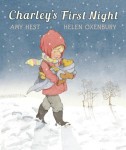 Charley’s First Night, by Amy Hest, illustrated by Helen Oxenbury (Candlewick), ages 4 and up
Charley’s First Night, by Amy Hest, illustrated by Helen Oxenbury (Candlewick), ages 4 and up
Aren’t we always looking for the perfect bedtime book? They don’t get any better than this one. The action centers on Henry and his new puppy. The setting is predictable; what happens on that first evening? It is Henry’s empathy that engages the reader as he repeatedly reassures Charley, “Don’t cry, don’t cry … I showed him my room again and my bed. I showed him my mother and father asleep in their bed, and I held Charley close in my strong arms” Oxenbury’s watercolor paintings perfectly capture the gentle relationship of a boy and his dog.
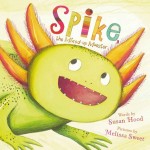 Spike the Mixed up Monster, by Susan Hood, illustrated by Melissa Sweet, (Simon and Schuster), ages 4 and up
Spike the Mixed up Monster, by Susan Hood, illustrated by Melissa Sweet, (Simon and Schuster), ages 4 and up
Spike is an axolotl (pronounced Ack-suh-Lah-tul), a special kind of salamander that lives in Mexico. This little reptile has been having trouble scaring the other species that live near him. Cook Prize winner (Balloons over Broadway), Sweet has created a biologically accurate environment as Spike ventures out swooshing his tail, shaking his spikes and baring his sharp pointy teeth.
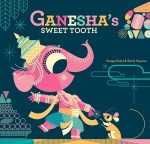 Ganesha’s Sweet Tooth by Sanjay Patel & Emily Haynes, (Chronicle), ages 5 and up
Ganesha’s Sweet Tooth by Sanjay Patel & Emily Haynes, (Chronicle), ages 5 and up
Ganesha, the elephant-headed god has a weakness for sweets and a magical mouse companion. Patel and Hanes have created an easily accessible picture book based on one of the most popular legends in Hindi mythology. Clean lines, bold graphics with contrasting colors of hot pink and navy blue, cream and teal animate the story. The wordless two-page spreads retelling the ancient epic Sanskrit poem, Mahabharata is a masterpiece.
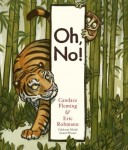 Oh, No! by Candace Fleming and Eric Rohman, (RH/Schwartz and Wade), ages 4 and up
Oh, No! by Candace Fleming and Eric Rohman, (RH/Schwartz and Wade), ages 4 and up
A ferocious tiger is chasing the animals of the jungle. Kids who got a kick out of I Want My Hat Back by Jon Klassen will be enthralled with the limited language of the rhyming couplets in this suspenseful tale. Fair warning…the ending is not “nice.”
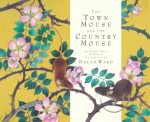 The Town Mouse and Country Mouse, Helen Ward, (Candlewick), ages 5 and up
The Town Mouse and Country Mouse, Helen Ward, (Candlewick), ages 5 and up
This lusciously illustrated retelling of Aesop’s fable of two mice who find that there really is no place like home is set in 1930’s New York on Christmas Eve. It is a perfect read aloud for the Christmas holiday.

